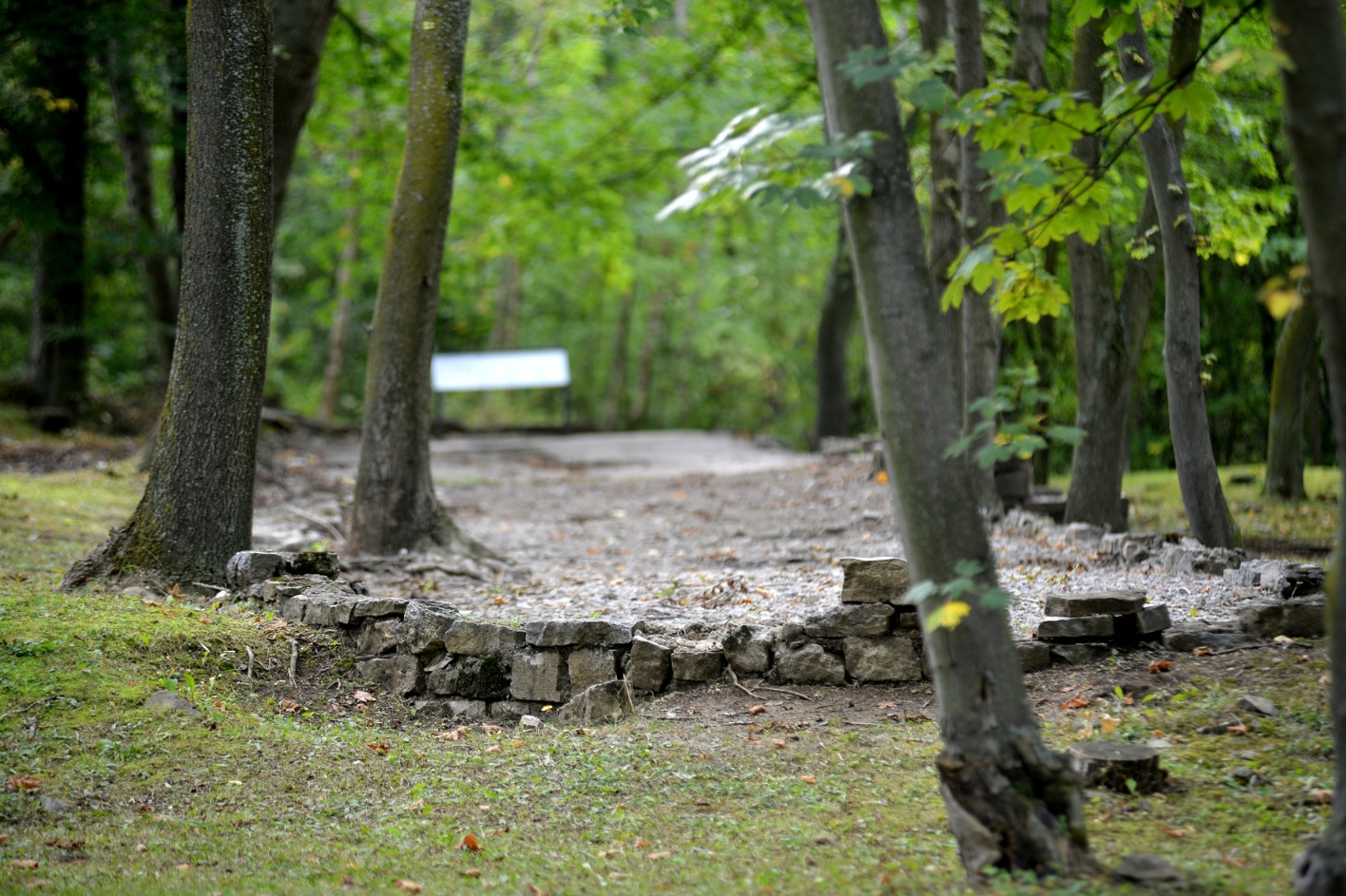


In the summer of 1938, construction on two barracks for sick inmates began in the area known as the "precinct." There were many sick inmates in the camp due to the hard labour, hunger, and constant lack of water. Most of them suffered from ailments caused by vermin, tuberculosis, or open wounds. The fact that there was an infirmary at all was the result of persistent efforts on the part of the political prisoners, who largely served as caretakers. There was a constant lack of medications, bandages, and equipment.
From 1941 onwards, the murder of sick patients by poisonous injection was an everyday occurrence. In the infirmary, inmates were also selected for transportation to the "euthanasia" killing centres Sonnenstein and Bernburg, where inmates no longer fit to work and Jewish inmates were suffocated by gas. Today, the park-like surroundings of the infirmary and operation barracks present a deceptively idyllic picture.
In February 1945, the SS had an additional barracks erected above the infirmary as a tuberculosis isolation station. This was taken down completely in the 1950s and was reused in a facility in Tambach-Dietharz, located in the Thuringian Forest. In the 1990s the barracks were returned to Buchenwald, where it stands today, set slightly to one side of its former location.

